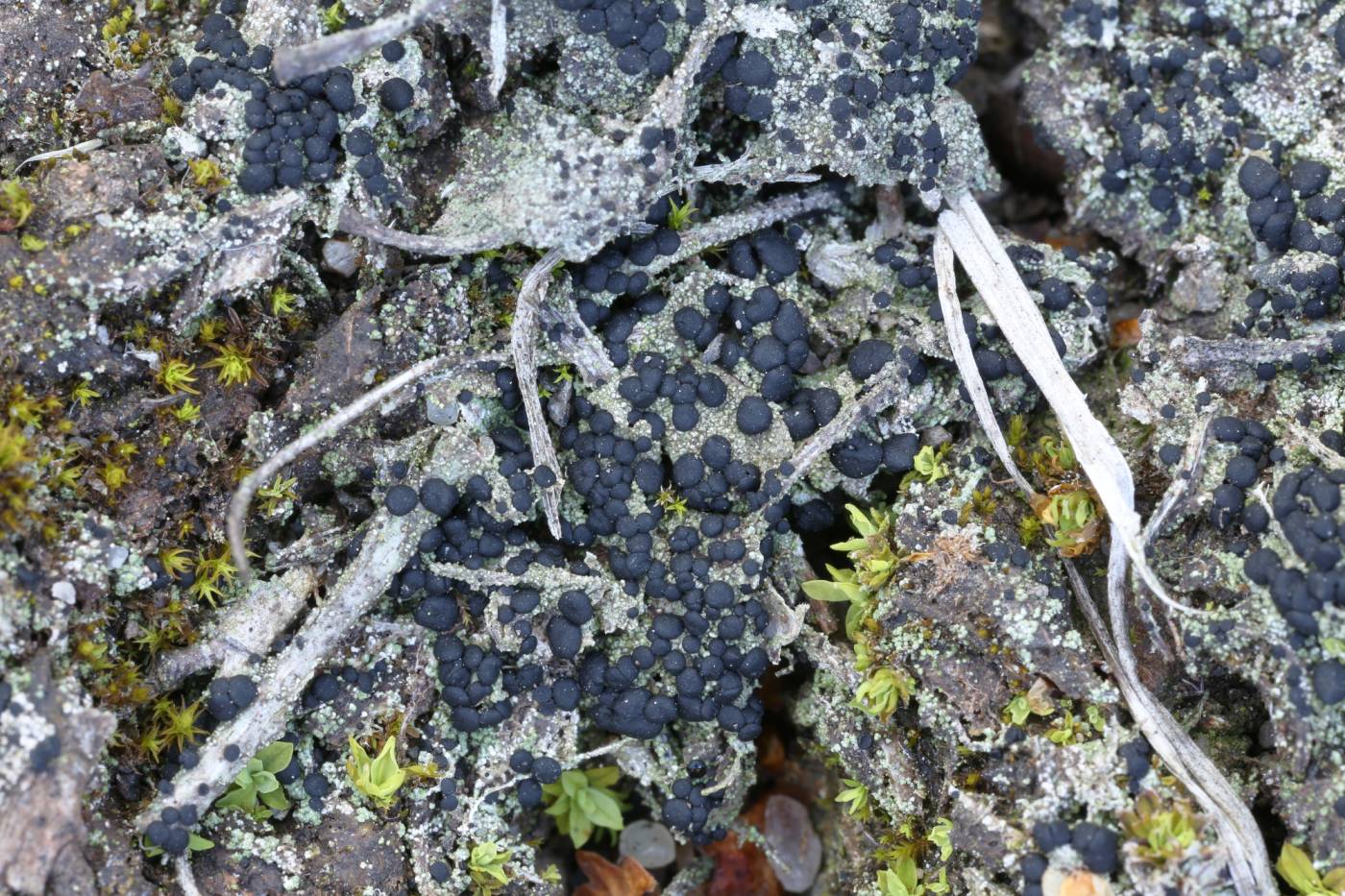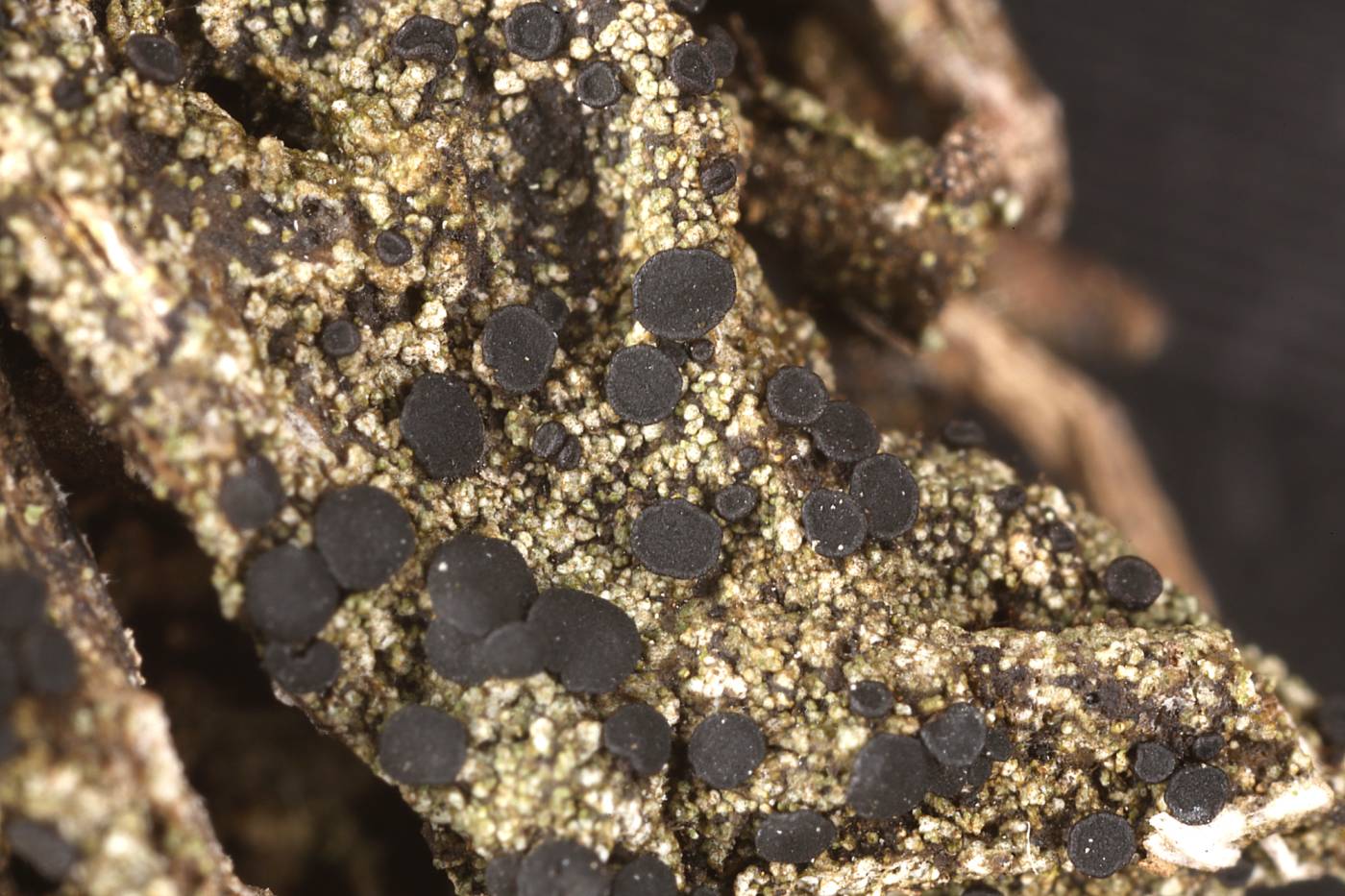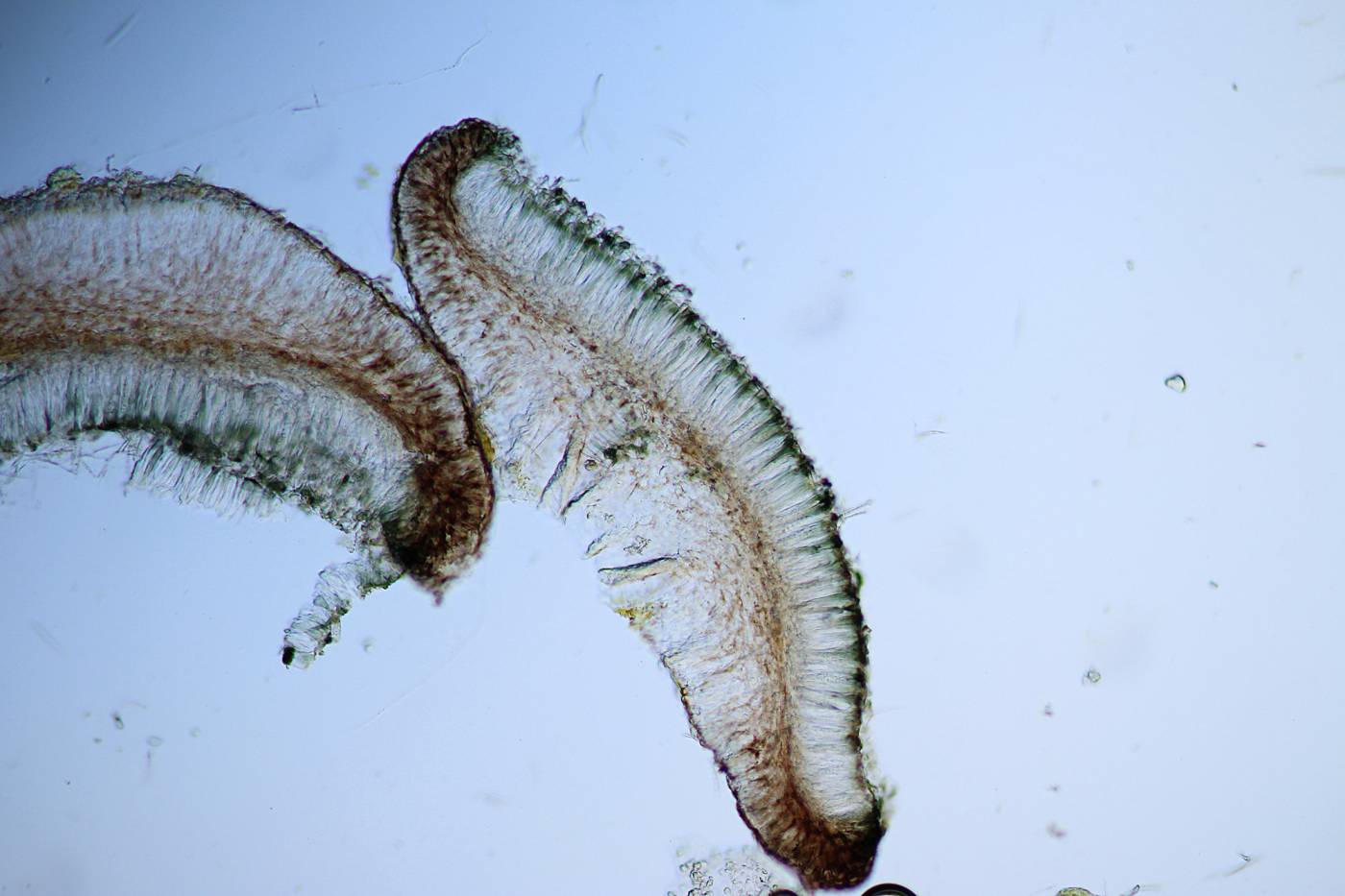A terricolous calciphilous taxon with circumpolar, respectively bipolar distribution, forming a rather conspicuous grey-white thallus with contrasting black-fruiting bodies. These contain conspicuous green pigments in the epihymenium, have brown hypothecium and relatively narrow, sparsely septate, worm-shaped ascospores. Most often, the species overgrows bryophytes, humus and plant debris on limestones and sometimes also on calcareous silicates. Although the taxon is sometimes listed as an arctic-alpine to boreo-montane (Nimis et al. 2018), in the Czech Republic, it prefers lower elevations and only rarely ascends mountains. It is a light-demanding species, but in exposed localities it prefers rather protected and slightly shaded microhabitats. It occurs mainly in naturally forestless rocky areas, in open relic forests on rocks, and also on places of anthropogenic origin (e.g. limestone quarries, buildings' remnants). It is locally distributed, common mainly in limestone areas. On the other hand, it may be completely absent in some larger regions.
Literature: Nimis P.L., Hafellner J., Roux C., Clerc P., Mayrhofer H., Martellos S. & Bilovitz P.O. (2018): The lichens of the Alps – an annotated checklist. – Mycokeys 31: 1–634.
taxonomic classification:Ascomycota → Lecanoromycetes → Lecanorales → Ramalinaceae → Toniniopsis
most frequented synonyms:Bacidia bagliettoanaRed List (Liška & Palice 2010):LC – least concern
Red List (Malíček 2023):C3 – endangered
Occurrence in the Czech Republic
All records: 63, confirmed 54. One click on a selected square displays particular record(s), including their source(s).



